
(HBO) - Chua Thac Bo Temple has been considered as one of the most famous spiritual and cultural tourism destinations in the Northwest region. The area of Hoa Binh lake is likened to Ha Long Bay on land.
At the beginning
of the new year, visitors coming here all have a feeling of relaxation and
peace when being in harmony with nature, enjoying the charming beauty of the
river along with the rustic cultural beauty, the harmony between nature and
beliefs, making visitors find the serenity and tranquility, wishing for a
favorable year. Some pictures recorded in the early days of the year of the Cat
in 2023 within the area of Hoa Binh Lake and Chua Thac Bo Temple.
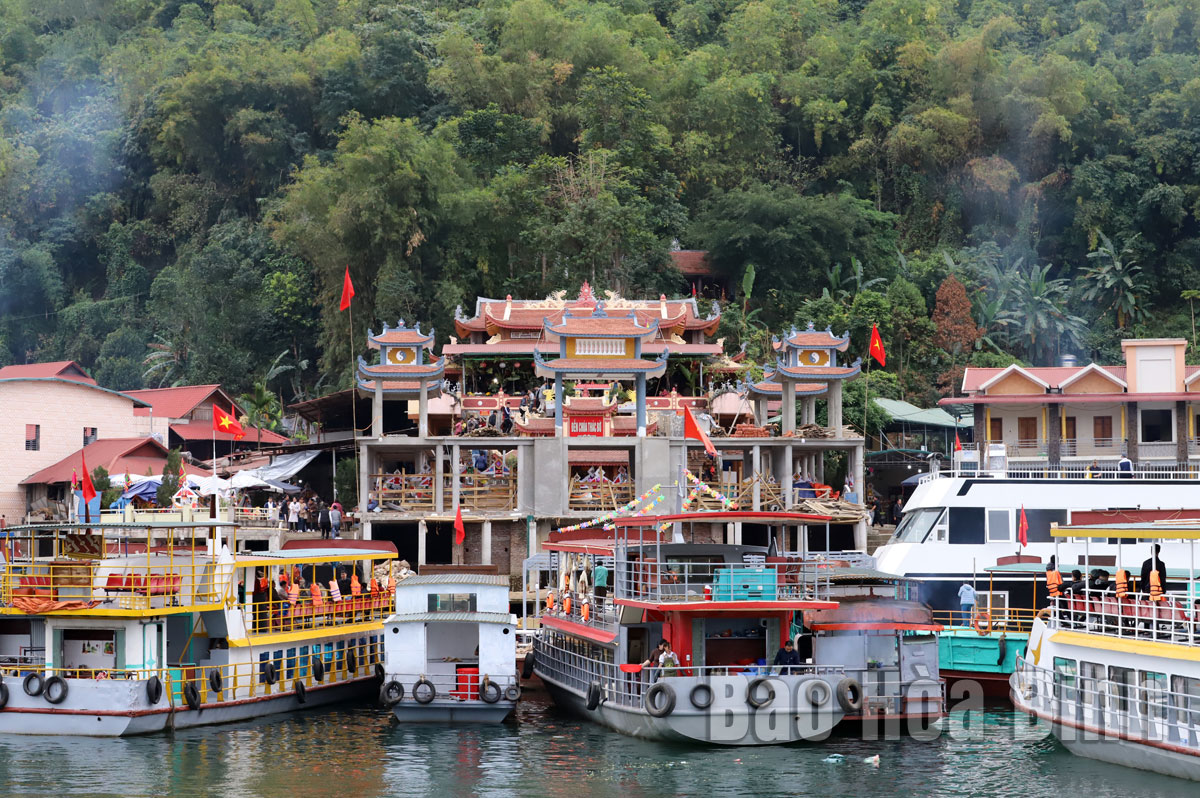 Chua Thac Bo
Temple is a famous spiritual and cultural tourism destination of Hoa Binh
province.
Chua Thac Bo
Temple is a famous spiritual and cultural tourism destination of Hoa Binh
province.
 The guides from
travel companies are leading the groups of people visiting Hoa the area of Binh
Lake and worshiping Chua Lord Thac Bo Temple
The guides from
travel companies are leading the groups of people visiting Hoa the area of Binh
Lake and worshiping Chua Lord Thac Bo Temple
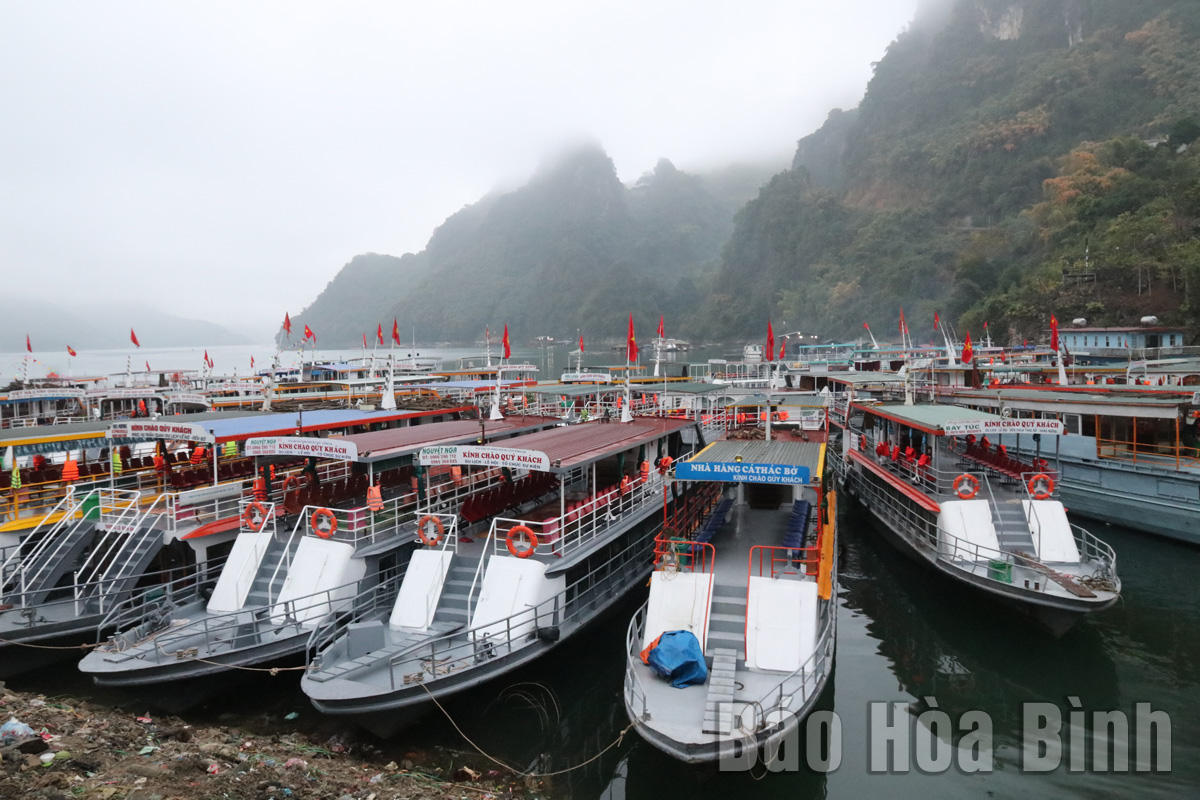 The boats on Bich
Ha port (Hoa Binh city) are ready to serve tourists.
The boats on Bich
Ha port (Hoa Binh city) are ready to serve tourists.
 At Bich Ha port,
there are many tourism boats for visitors to choose from.
At Bich Ha port,
there are many tourism boats for visitors to choose from.
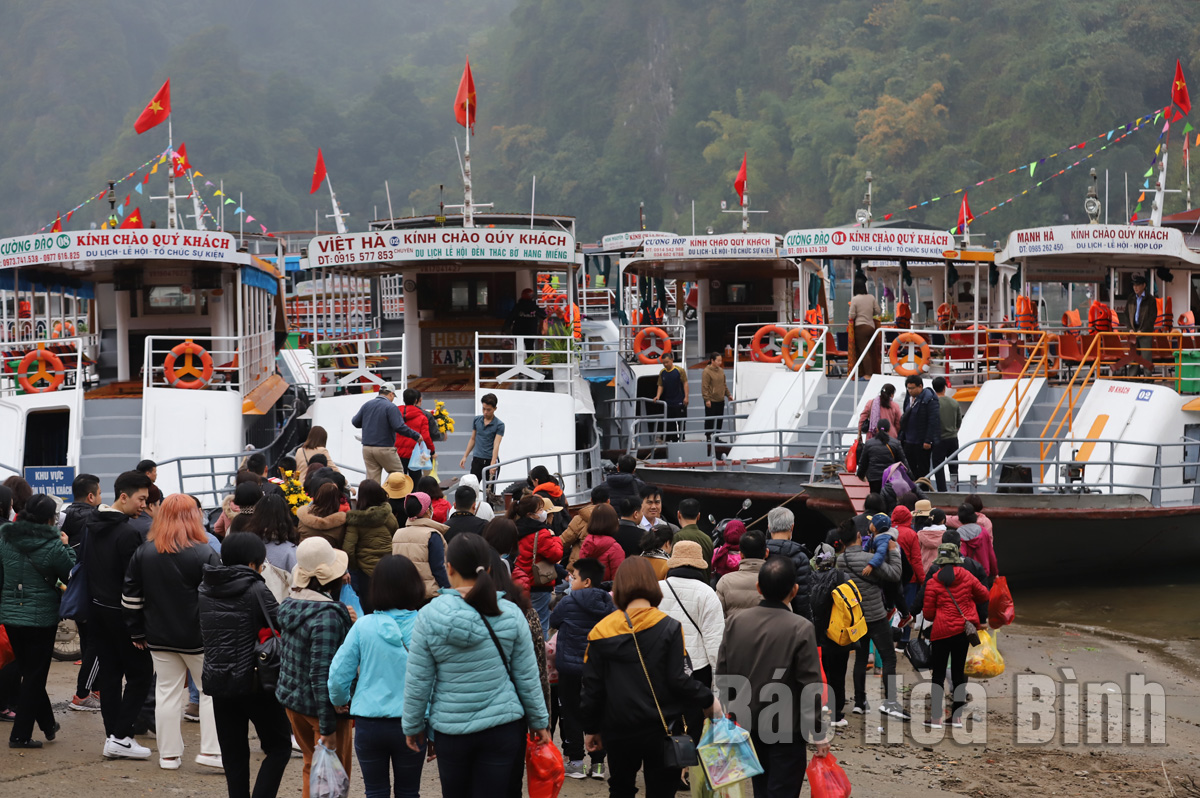 There are a lot
of tourists coming to Chua Thac Bo temple.
There are a lot
of tourists coming to Chua Thac Bo temple.
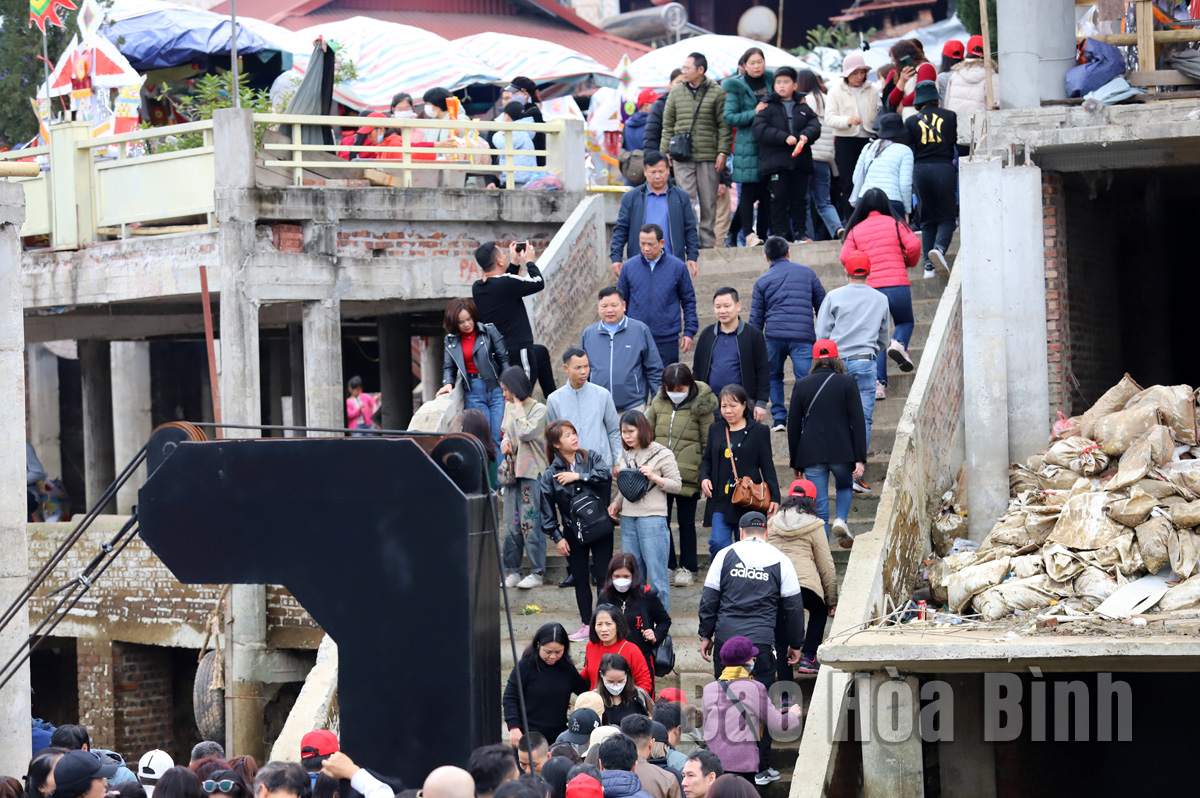 Boats are busy
in the area within Hoa Binh Lake.
Boats are busy
in the area within Hoa Binh Lake.
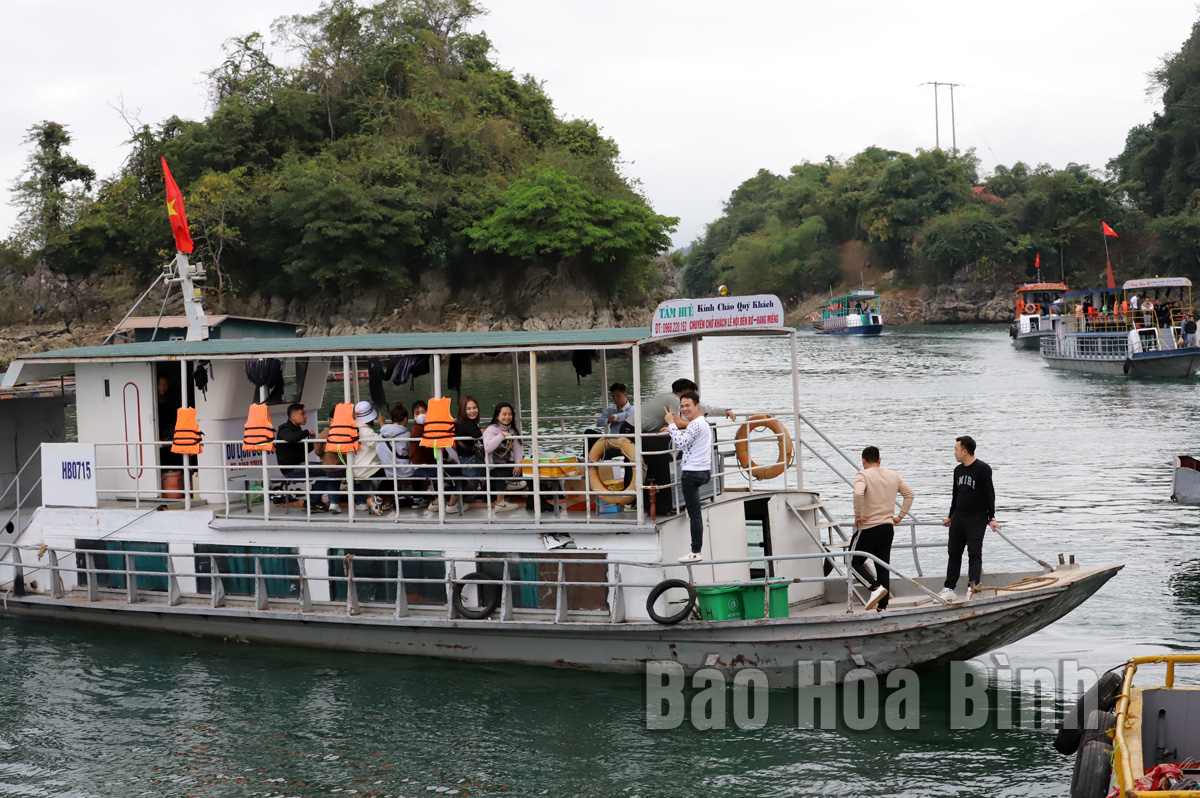
The national
flags on boats have created more joyful atmosphere in the touris area withi Hoa
Binh Lake.
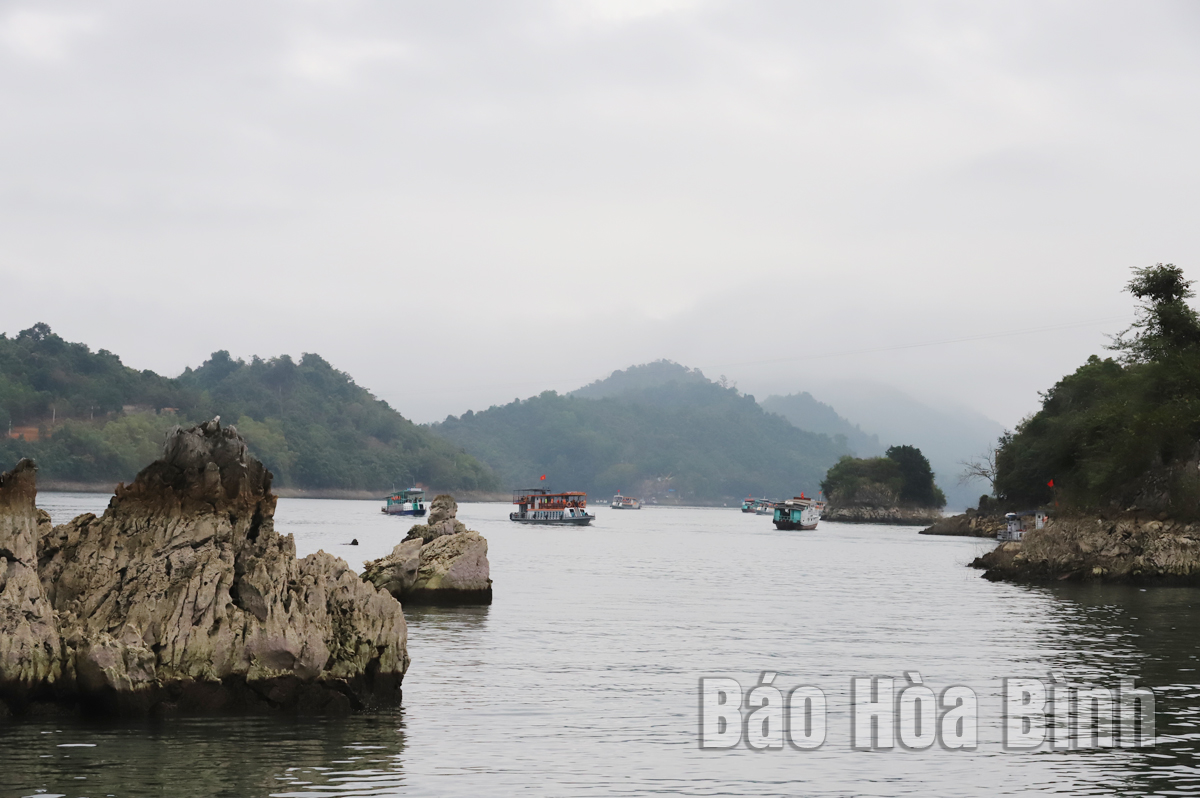
The mountains on
the lake surface are as calm as a miniature Ha Long.
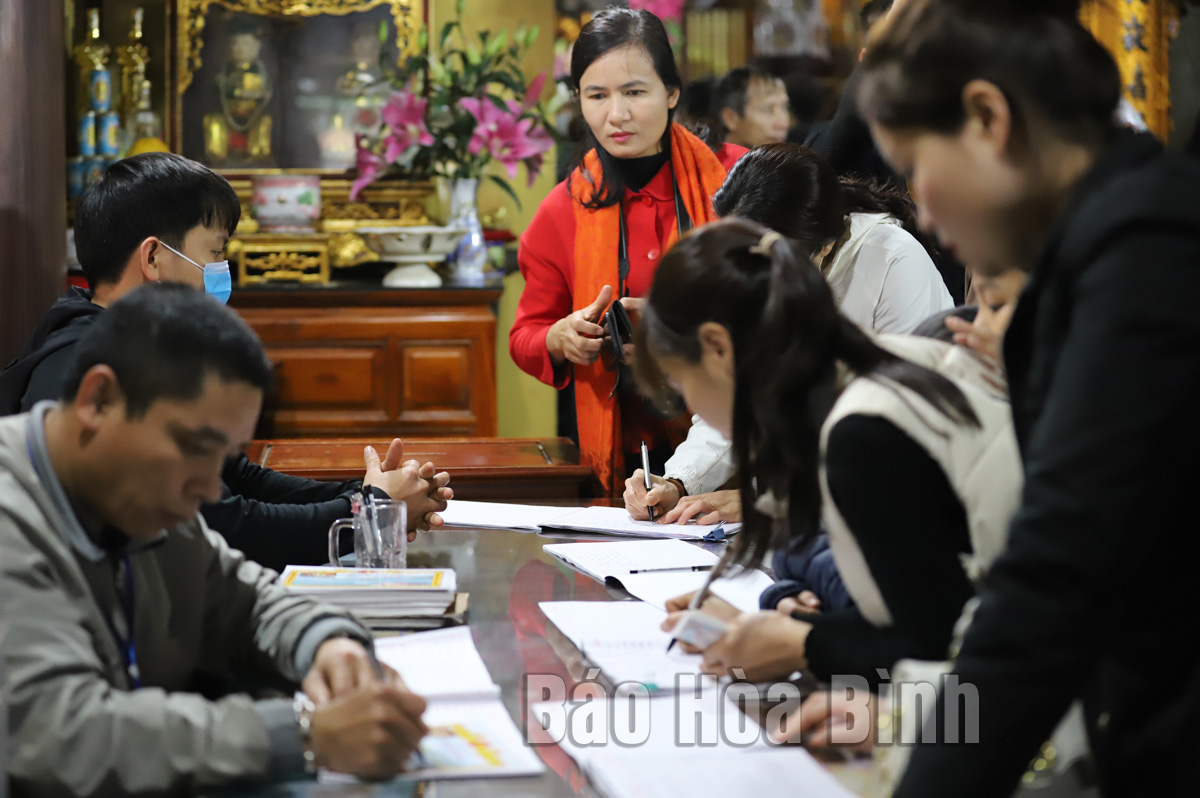 Thac Bo Cave is always visited by a large number of tourists.
Thac Bo Cave is always visited by a large number of tourists.
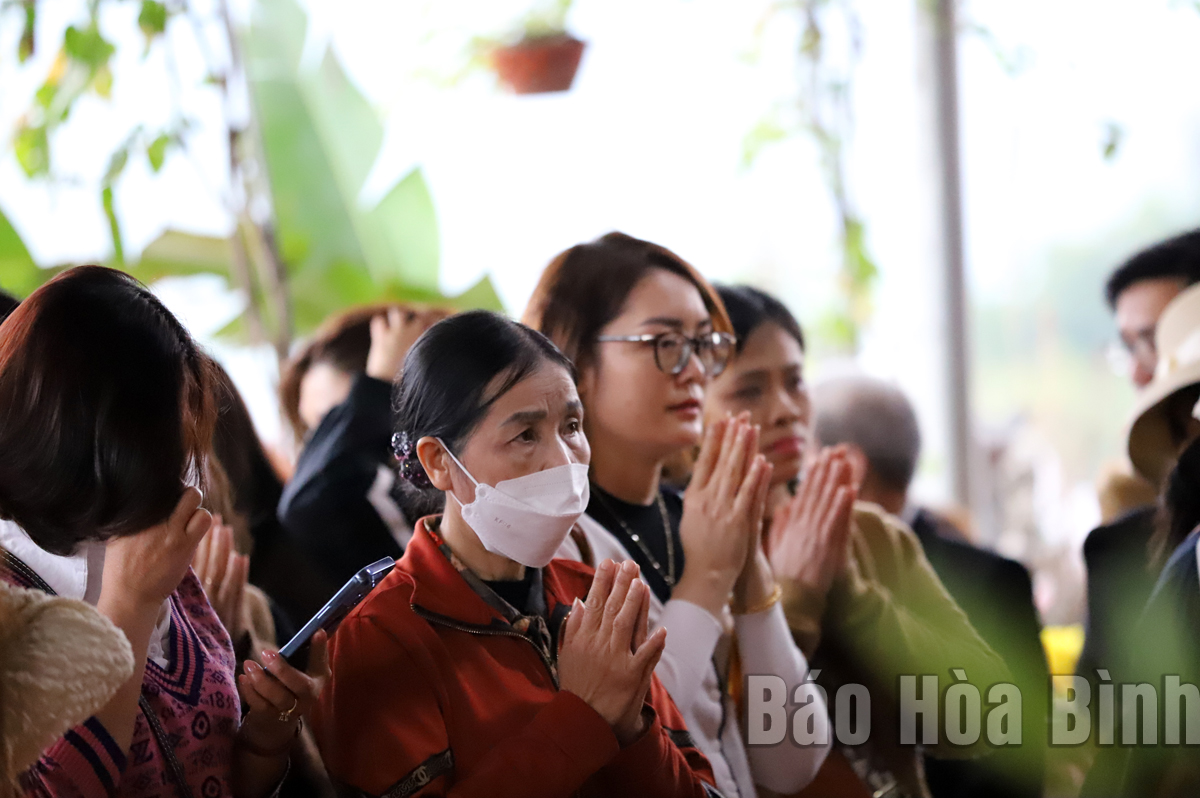 Wishing a good year.
Wishing a good year.
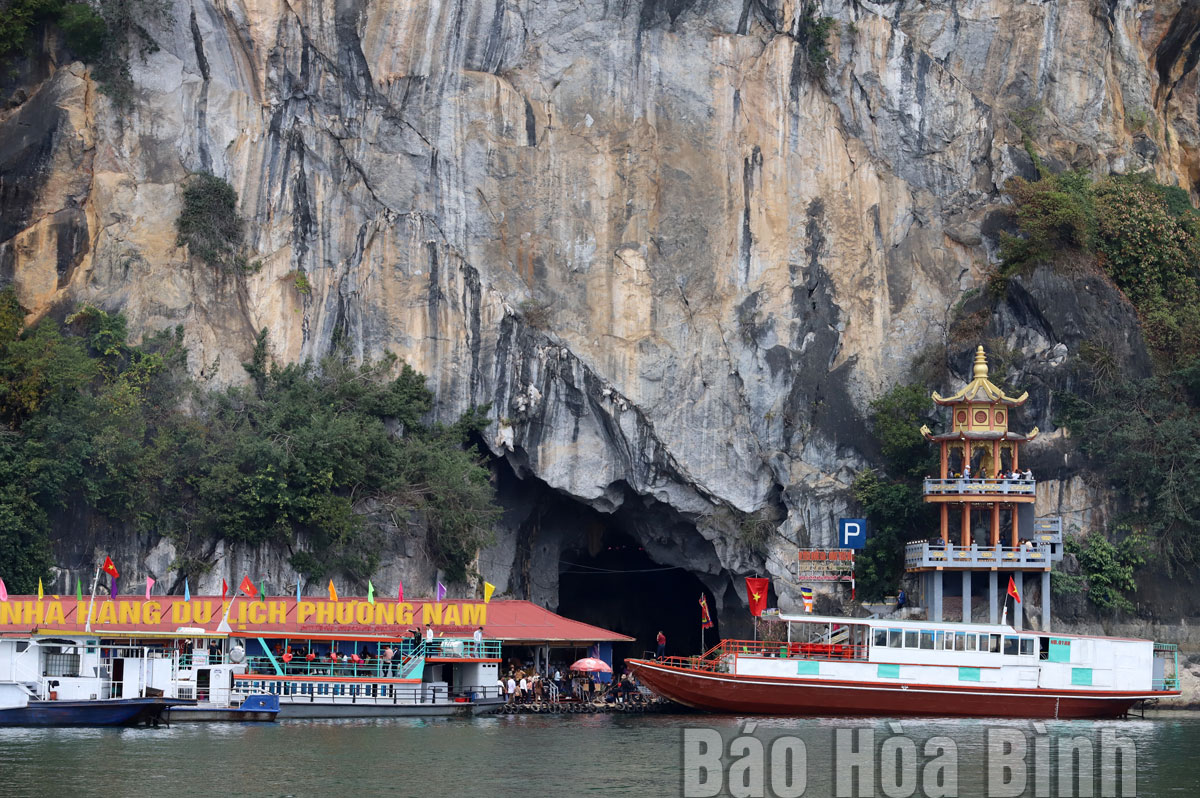
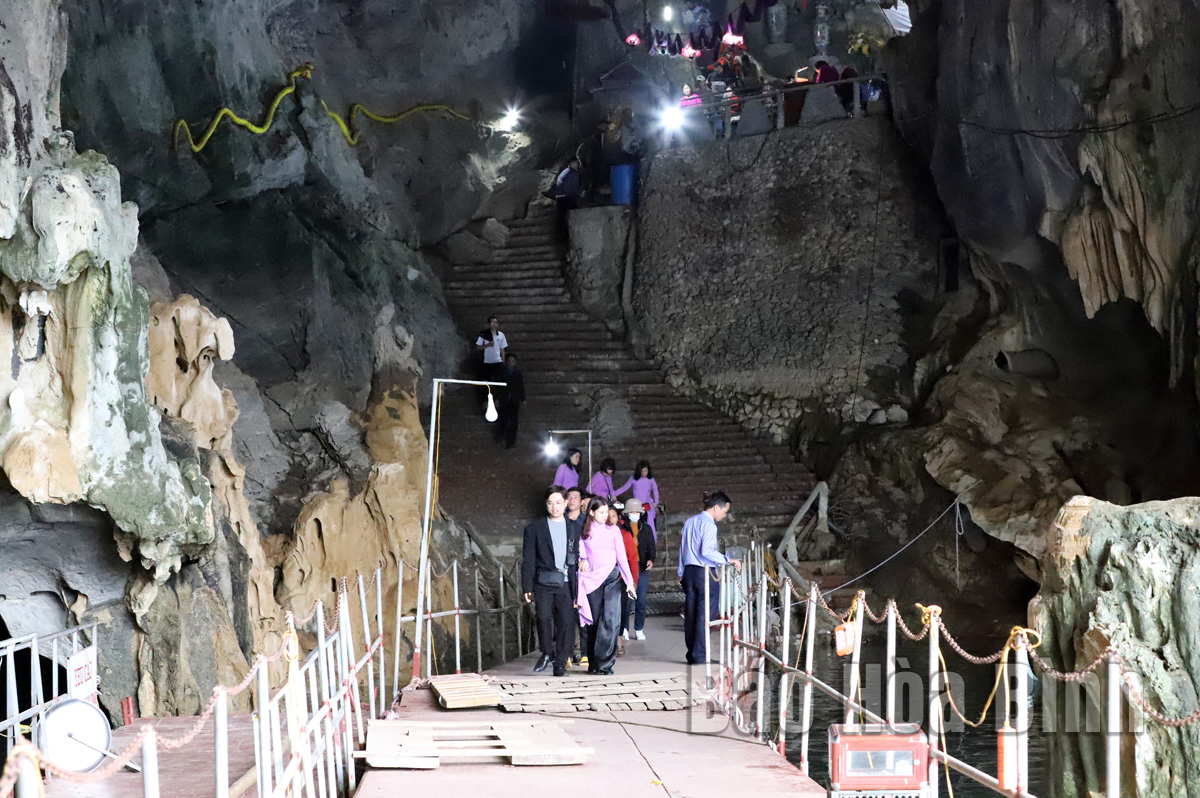 The stalactites
are honed by nature into many different and unique shapes.
The stalactites
are honed by nature into many different and unique shapes.
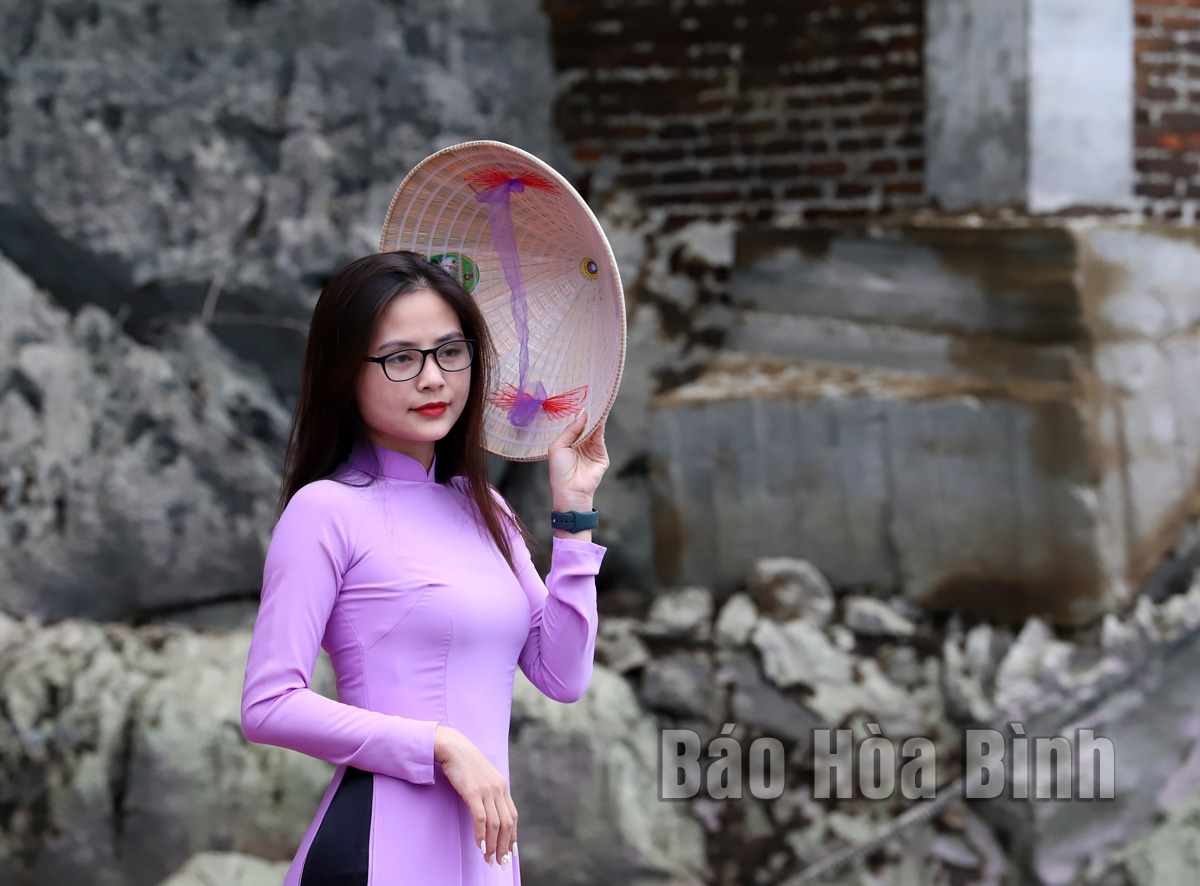
A young woman
poses while traveling in the spring in the area within Hoa Binh lake.
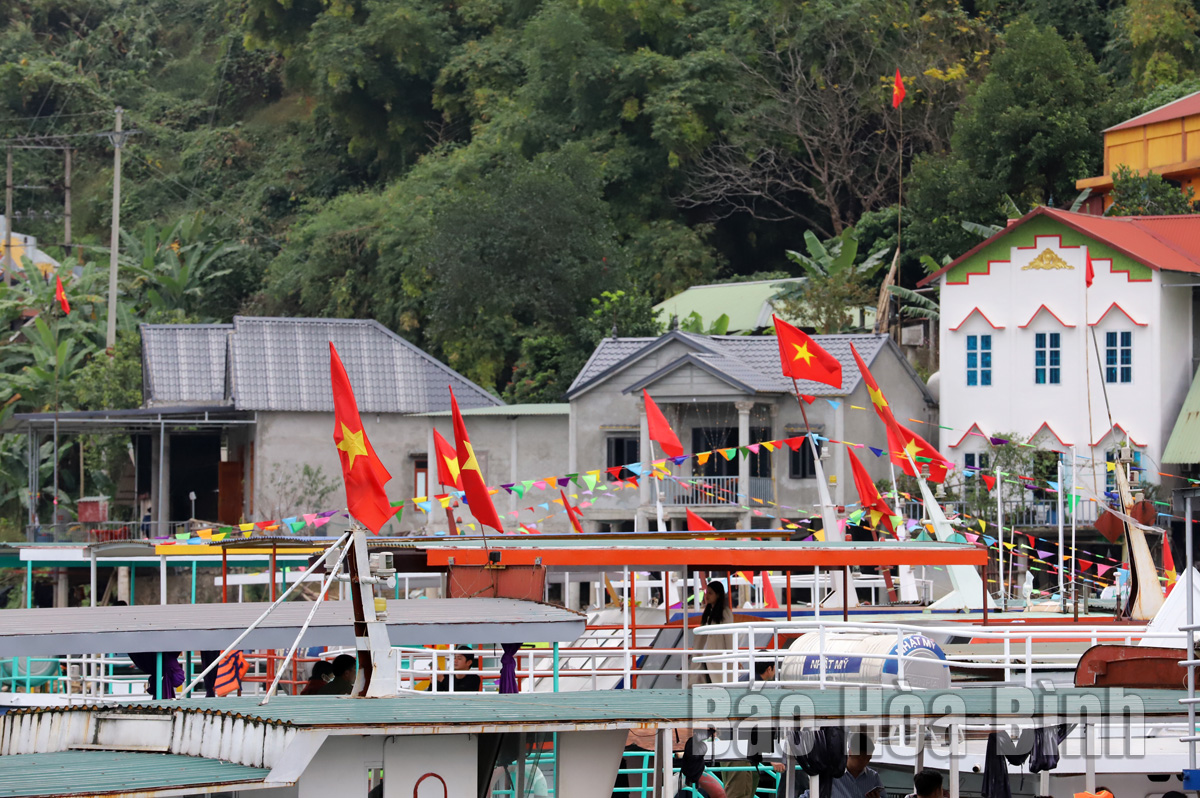 The national
flags on boats have created more joyful atmosphere in the touris area withi Hoa
Binh Lake.
The national
flags on boats have created more joyful atmosphere in the touris area withi Hoa
Binh Lake.
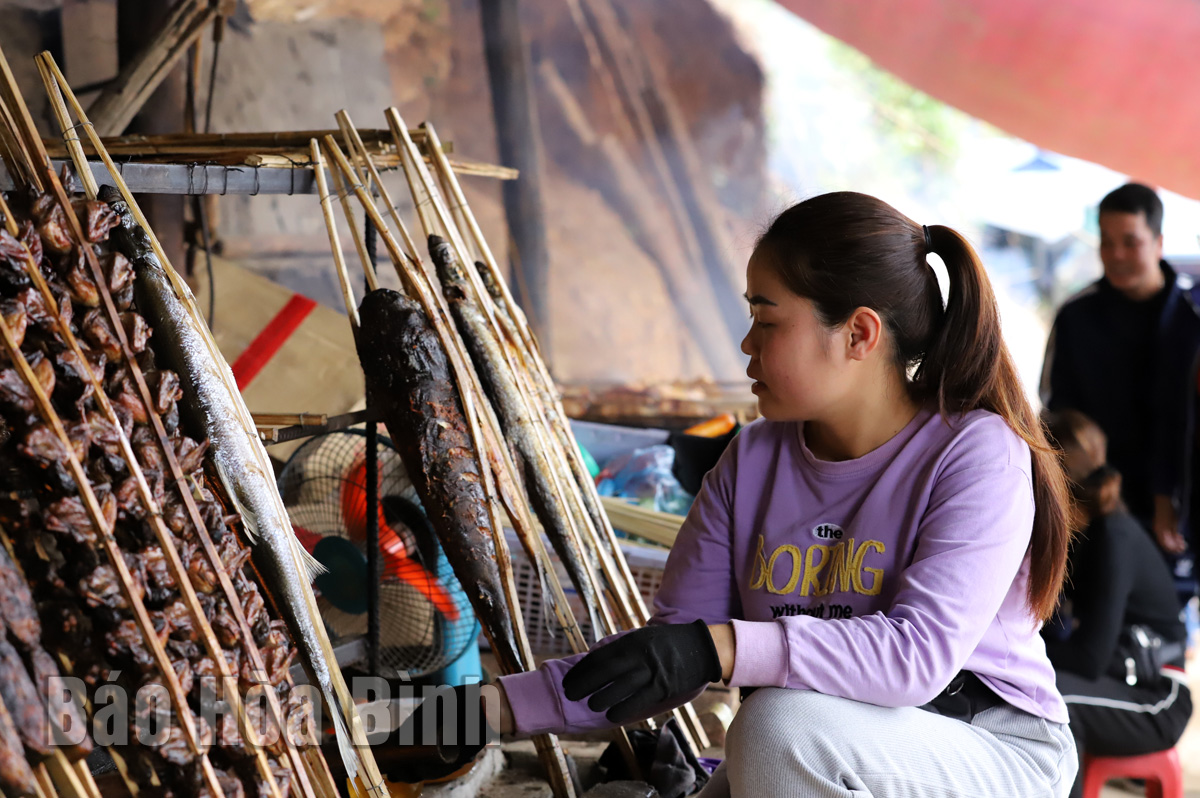 The grilled fish
and grilled shrimp from the river are always attractive to tourists when
traveling at Chua Thac Bo temple.
The grilled fish
and grilled shrimp from the river are always attractive to tourists when
traveling at Chua Thac Bo temple.
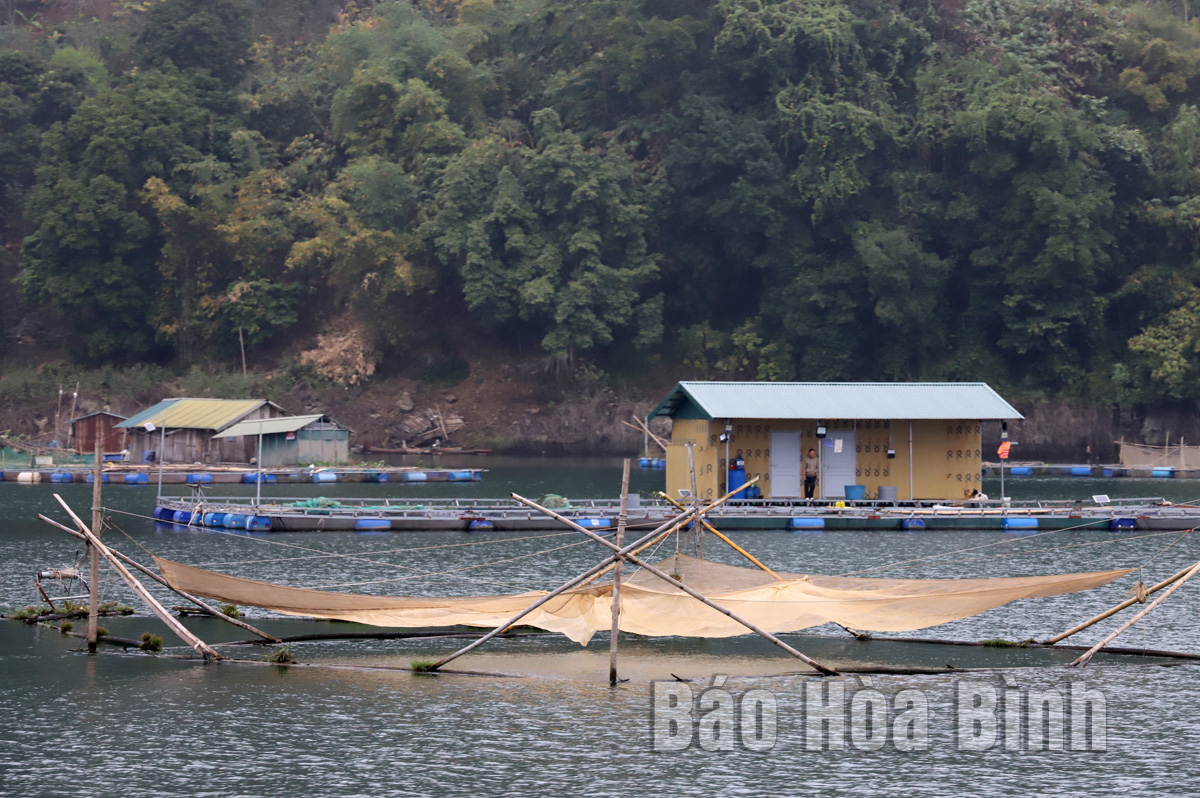 Developing the
cage fish farming in the area within Hoa Binh lake.
Developing the
cage fish farming in the area within Hoa Binh lake.
In the last historic days of April, blending with the joyful atmosphere of the whole country, on the streets of Hoa Binh City, flags, banners and slogans are brilliantly decorated to celebrate the 50th Anniversary of Southern Liberation and National Reunification. Here are the records from Hoa Binh newspaper’s reporters:
Nestled halfway up the mountains in Cao Son commune, Da Bac district, Sung village appears like a picture preserved intact through generations. With a history of over 300 years, the village is home to nearly 100 households of Dao Tien ethnic group – the people who still maintain their distinctive characteristics in housing architecture, clothing, customs and traditional crafts. The village is drawing increasing interest and exploration from both domestic and international tourists, as every visit becomes a cultural journey to experience the authenticity, friendliness, and hospitality of this highland region.
This Spring, more than 1,000 phoenix trees in Thang Hamlet, Thach Yen Commune (Cao Phong) have bloomed brilliantly, quickly spreading on social media. The picturesque beauty of the flower garden has attracted the participation of many people to admire and take photos.
This belief is both a guiding principle and a lifelong ambition for Sa Van Cam, a member of the Tay ethnic group in Da Bac district and a passionate advocate for the Tay culture. The native has devoted years to the revival, preservation, and teaching of the ancient Tay script.
Located just 25 km from Hoa Binh city and approximately 100km from Hanoi, with a journey of around 1 hour 45 minutes, Ngoi Hoa ecotourism site (PriorBay Resort) in Suoi Hoa commune, Tan Lac district, is a stunning peninsula retreat, and a standout destination within the Hoa Binh Reservoir tourism area. Officially opening in February this year, the resort captivates visitors with its distinctive vacation products and a range of exciting adventure experiences.
Over 1,500 women paraded in traditional ao dai (long dress) at Hoa Binh Square on March 5 to mark Ao Dai Week 2025 launched by the Vietnam Women's Union. Organised by the provincial Women’s Union in collaboration with the city’s chapter, the annual event features lively folk dance performances and a colorful parade that celebrated the beauty of Vietnam’s traditional dress and its rich cultural heritage.



 Chua Thac Bo
Temple is a famous spiritual and cultural tourism destination of Hoa Binh
province.
Chua Thac Bo
Temple is a famous spiritual and cultural tourism destination of Hoa Binh
province. The guides from
travel companies are leading the groups of people visiting Hoa the area of Binh
Lake and worshiping Chua Lord Thac Bo Temple
The guides from
travel companies are leading the groups of people visiting Hoa the area of Binh
Lake and worshiping Chua Lord Thac Bo Temple The boats on Bich
Ha port (Hoa Binh city) are ready to serve tourists.
The boats on Bich
Ha port (Hoa Binh city) are ready to serve tourists. At Bich Ha port,
there are many tourism boats for visitors to choose from.
At Bich Ha port,
there are many tourism boats for visitors to choose from. There are a lot
of tourists coming to Chua Thac Bo temple.
There are a lot
of tourists coming to Chua Thac Bo temple. Boats are busy
in the area within Hoa Binh Lake.
Boats are busy
in the area within Hoa Binh Lake.

 Thac Bo Cave is always visited by a large number of tourists.
Thac Bo Cave is always visited by a large number of tourists.  Wishing a good year.
Wishing a good year. 
 The stalactites
are honed by nature into many different and unique shapes.
The stalactites
are honed by nature into many different and unique shapes.
 The national
flags on boats have created more joyful atmosphere in the touris area withi Hoa
Binh Lake.
The national
flags on boats have created more joyful atmosphere in the touris area withi Hoa
Binh Lake. The grilled fish
and grilled shrimp from the river are always attractive to tourists when
traveling at Chua Thac Bo temple.
The grilled fish
and grilled shrimp from the river are always attractive to tourists when
traveling at Chua Thac Bo temple. Developing the
cage fish farming in the area within Hoa Binh lake.
Developing the
cage fish farming in the area within Hoa Binh lake.